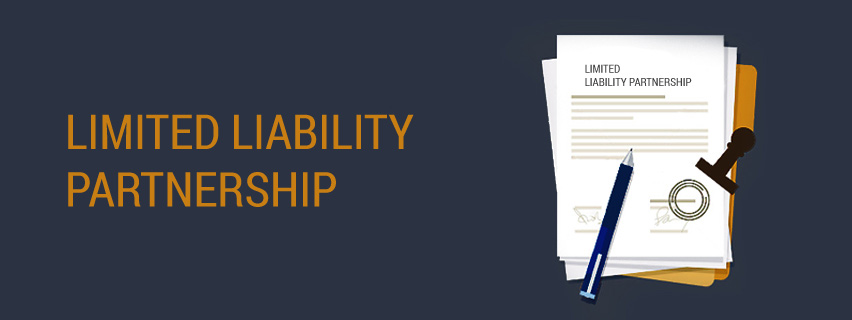
Introduction to Producer Company Registration in India
In recent years, the concept of a Farmer Producer Company (FPC) has gained significant popularity in India. These companies are formed by farmers and agricultural producers to improve their income and overall socio-economic status. In this article, I will provide you with a complete guide to producer company registration in India. Whether you are a farmer looking to register a producer company or simply interested in understanding the process, this guide will equip you with all the necessary information.
Understanding the Concept of a Farmer Producer Company (FPC)
A Farmer Producer Company (FPC) is a type of producer company that is formed and operated by farmers and agricultural producers. The main objective of an FPC is to enhance the income and livelihoods of its members by providing them with various services such as input supply, production, marketing, and value addition. By pooling their resources and collective strength, farmers can overcome the challenges they face individually and benefit from economies of scale.
The FPC model allows farmers to become shareholders in the company, giving them the power to participate in decision-making and share the profits generated. This model not only ensures that farmers have a say in the company’s operations but also promotes the overall development of the agricultural sector.
Benefits of Registering as a Producer Company
There are several benefits associated with registering as a producer company in India. Firstly, a producer company enjoys the status of a separate legal entity, which means that it has its rights and liabilities. This provides a level of protection to the members of the company, as their assets are not at risk in case of any financial or legal issues.
Secondly, a producer company has perpetual succession, which means that it continues to exist even if the members change. This ensures the continuity of operations and provides stability to the business.
Additionally, a producer company can raise capital by issuing shares to its members, allowing for easy access to funds. This enables the company to invest in infrastructure, technology, and other resources that can enhance productivity and profitability.
Eligibility Criteria for Producer Company Registration
To be eligible for producer company registration in India, certain criteria must be met. Firstly, the company must have a minimum of ten members who are agricultural producers. These members can be individuals, farmers’ associations, or agricultural cooperatives.
Secondly, at least two-thirds of the members must be engaged in primary production activities. This ensures that the company is truly representative of the agricultural sector and focused on the welfare of its members.
Furthermore, the company must have a minimum paid-up capital of Rs. 5 lakh or such higher amount as prescribed by the Companies Act, 2013. This capital is contributed by the members of the company in proportion to their shareholding.
Step-by-Step Process for Producer Company Registration
registering a producer company in India involves several steps. Here is a step-by-step guide to help you navigate through the process:
- Name Reservation: The first step is to choose a unique name for your producer company and check its availability with the Registrar of Companies (ROC). Once the name is approved, it will be reserved for 20 days.
- Drafting and Filing of Documents: The next step is to prepare the necessary documents for registration, including the Memorandum of Association (MOA) and Articles of Association (AOA). These documents outline the objectives, rules, and regulations of the company. Once the documents are drafted, they need to be filed with the ROC along with the required fees.
- Obtaining a Digital Signature Certificate (DSC) and Director Identification Number (DIN): All the directors of the producer company must obtain a Digital Signature Certificate (DSC) and Director Identification Number (DIN) from the Ministry of Corporate Affairs. These are essential for signing the documents and fulfilling the compliance requirements.
- Verification and Approval: The ROC will verify the documents and issue a Certificate of Incorporation if everything is in order. This certificate officially establishes the producer company as a separate legal entity.
- PAN and TAN Application: After obtaining the Certificate of Incorporation, the company must apply for a Permanent Account Number (PAN) and Tax Deduction and Collection Account Number (TAN) from the Income Tax Department. These are required for tax compliance purposes.
- Bank Account Opening: Finally, the producer company must open a bank account in the name of the company and deposit the minimum paid-up capital. This account will be used for all financial transactions of the company.
Documents Required for Producer Company Registration
To register a producer company in India, certain documents need to be submitted to the Registrar of Companies (ROC). Here is a list of the essential documents:
- Memorandum of Association (MOA): The MOA outlines the objectives, rules, and regulations of the producer company.
- Articles of Association (AOA): The AOA contains the bylaws and internal rules of the producer company.
- Declaration by Promoters: The promoters of the company must submit a declaration stating that they are not disqualified from forming a company.
- Identity and Address Proof of Directors: The directors of the company must provide their identity and address proof, such as a PAN card, Aadhaar card, passport, or voter ID.
- Proof of Registered Office: The producer company must provide proof of its registered office address, such as a rental agreement or utility bill.
- Digital Signature Certificates (DSC): The directors must obtain digital signature certificates from a certifying authority.
- Director Identification Number (DIN): The directors must obtain a DIN from the Ministry of Corporate Affairs.
Role and Responsibilities of Directors in a Producer Company
The directors play a crucial role in the functioning of a producer company. They are responsible for managing the affairs of the company and making decisions in the best interest of the members. Here are some of the key roles and responsibilities of directors in a producer company:
- Strategic Planning: Directors are involved in the strategic planning process of the producer company, including setting goals, formulating policies, and developing long-term strategies.
- Corporate Governance: Directors ensure that the company complies with all legal and regulatory requirements. They are responsible for maintaining transparency, accountability, and ethical conduct within the organization.
- Financial Management: Directors oversee the financial management of the producer company, including budgeting, financial reporting, and internal controls. They ensure that the company’s resources are utilized effectively and efficiently.
- Relationship Building: Directors represent the company and build relationships with various stakeholders, including members, government authorities, financial institutions, and other organizations. They act as ambassadors of the company and promote its interests.
- Risk Management: Directors identify and manage risks that may affect the producer company. They develop risk mitigation strategies and ensure that appropriate measures are in place to protect the interests of the members.
Compliance Requirements for a Registered Producer Company
Once a producer company is registered, it must fulfill certain compliance requirements to maintain its legal status. Here are some of the key compliance requirements for a registered producer company:
- Annual General Meeting (AGM): The producer company must hold an AGM within six months from the end of each financial year. During the AGM, the directors present the annual financial statements, discuss the performance of the company, and address any concerns or queries raised by the members.
- Filing of Annual Returns: The producer company must file its annual returns with the ROC within 60 days from the date of the AGM. The annual returns include financial statements, auditor’s reports, and other relevant documents.
- Maintenance of Statutory Registers and Records: The producer company must maintain various statutory registers and records, including the register of members, register of directors, minutes of meetings, and resolutions passed by the company.
- Compliance with Tax Laws: The producer company must comply with all tax laws, including filing income tax returns, paying taxes, and adhering to GST regulations, if applicable.
- Regular Audit: The producer company must conduct a regular audit of its financial statements by a qualified auditor. The audited financial statements provide an independent assessment of the company’s financial position and performance.
Common Challenges Faced During Producer Company Registration
While the process of producer company registration in India has been streamlined, there are still some challenges that applicants may face. Here are some of the common challenges and how to overcome them:
- Complex Documentation: The documentation required for producer company registration can be complex and time-consuming. To overcome this challenge, it is advisable to seek professional assistance from a company secretary or a legal expert who can guide you through the process.
- Lack of Awareness: Many farmers and agricultural producers are not aware of the benefits and opportunities offered by producer company registration. To address this challenge, it is essential to create awareness through workshops, training programs, and information campaigns.
- Limited Resources: Access to capital and resources is often a challenge for farmers and agricultural producers. To overcome this, the government and financial institutions should provide financial support, grants, and subsidies to encourage producer company registration.
- Resistance to Change: Farmers are often resistant to change due to fear of the unknown and concerns about losing control over their operations. To address this challenge, it is crucial to educate farmers about the advantages of producer company registration and how it can improve their income and livelihoods.
Alternatives to Producer Company Registration
While producer company registration is a popular choice for farmers and agricultural producers, there are alternative business structures that can also be considered. Some of the alternatives include:
- Cooperative Societies: Farmers can form cooperative societies, which are member-owned and operated organizations. These societies provide various services to their members, including input supply, credit facilities, and marketing support.
- Partnership Firm: Farmers can form a partnership firm where they pool their resources and share the profits and losses. This is a relatively simple and flexible business structure that does not require formal registration.
- Private Limited Company: Farmers can also choose to register a private limited company, which offers limited liability protection and access to capital through shareholding. However, this structure may not be suitable for small-scale farmers due to the higher compliance requirements and costs involved.
Conclusion: Is Producer Company Registration Right for Your Business?
In conclusion, producer company registration in India offers several benefits to farmers and agricultural producers. It provides a platform for collective action, enhances the income and livelihoods of members, and promotes the overall development of the agricultural sector. However, before deciding to register a producer company, it is important to consider the eligibility criteria, compliance requirements, and challenges associated with the process.
If you are a farmer or agricultural producer looking to improve your income and socio-economic status, producer company registration may be the right choice for your business. By forming a producer company, you can leverage the collective strength of farmers, access resources and capital, and overcome the challenges faced individually. Remember to seek professional guidance and consider all the factors before making a decision.









